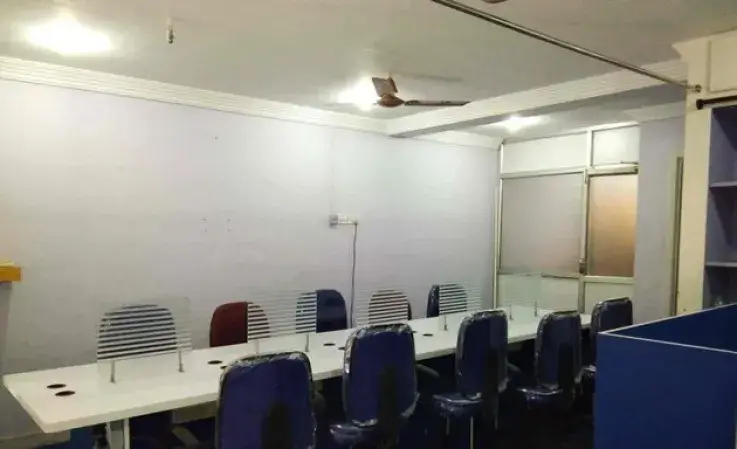Introduction
Coworking spaces have become a popular alternative to traditional office environments, offering flexibility, community, and a range of amenities to freelancers, startups, and even established companies. However, not all coworking spaces succeed. Many factors can contribute to the failure of a coworking space, from poor location choices to inadequate community building. This article explores the six most common reasons why coworking spaces fail, providing insights into how these pitfalls can be avoided.
1. Poor Location
The location of a coworking space is one of the most critical factors in its success or failure. A poorly chosen location can lead to low occupancy rates and financial struggles.
Accessibility and Convenience
A successful coworking space needs to be easily accessible to its target audience. This means being close to public transportation, major highways, and amenities like restaurants and cafes. A location that is difficult to reach or inconvenient for potential members will struggle to attract and retain them.
Market Demand
Understanding the local market demand is crucial. Opening a coworking space in an area with little demand for such services can lead to failure. Conducting thorough market research to identify areas with a high concentration of freelancers, startups, and remote workers can help ensure a steady stream of members.
2. Inadequate Layout and Infrastructure
The physical layout and infrastructure of a coworking space play a significant role in its success. A poorly designed space can hinder productivity and deter potential members.
Functional Design
A coworking space should be designed with functionality in mind. This includes providing a variety of workspaces, such as private offices, dedicated desks, and hot desks, to cater to different needs. Additionally, meeting rooms, phone booths, and communal areas should be thoughtfully placed to minimize noise and distractions.
Technological Infrastructure
Reliable internet, ample power outlets, and modern office equipment are essential for a coworking space. Technical issues can frustrate members and lead to negative reviews. Investing in robust IT infrastructure and regular maintenance can help prevent these problems.
3. Lack of Authenticity and Unique Value Proposition
In a competitive market, coworking spaces need to differentiate themselves by offering a unique value proposition and maintaining authenticity.
Brand Identity
A strong brand identity can set a coworking space apart from its competitors. This includes having a clear mission, values, and aesthetic that resonate with the target audience. Spaces that lack a distinct identity may struggle to attract and retain members.
Community and Culture
Building a strong community and fostering a positive culture are crucial for the success of a coworking space. Members should feel a sense of belonging and connection. Spaces that fail to create a vibrant community may see high turnover rates and low member satisfaction.
4. Insufficient Amenities
Amenities are a key selling point for coworking spaces. Insufficient or poorly maintained amenities can lead to member dissatisfaction and attrition.
Basic Amenities
Basic amenities such as high-speed internet, comfortable seating, and clean restrooms are essential. Failure to provide these can result in negative experiences for members.
Additional Perks
Offering additional perks like free coffee, snacks, fitness facilities, and event spaces can enhance the appeal of a coworking space. However, these amenities must be well-maintained and consistently available to be effective.
5. Ineffective Marketing and Sales Strategies
Even the best coworking space will struggle without effective marketing and sales strategies to attract and retain members.
Targeted Marketing
Understanding the target audience and tailoring marketing efforts to reach them is crucial. This includes using social media, content marketing, and local advertising to generate awareness and interest.
Sales and Retention
A strong sales strategy is essential for converting leads into members. Additionally, retention strategies such as member engagement programs, feedback mechanisms, and loyalty incentives can help maintain a stable member base.
6. Failure to Build a Strong Community
One of the main attractions of coworking spaces is the sense of community they offer. Failure to build and nurture this community can lead to high turnover and low member satisfaction.
Community Events
Regular community events such as networking sessions, workshops, and social gatherings can help build a strong sense of community. These events provide opportunities for members to connect, collaborate, and build relationships.
Member Engagement
Active member engagement is crucial for maintaining a vibrant community. This includes having community managers who interact with members, address their concerns, and foster a welcoming atmosphere. Spaces that neglect member engagement may struggle to retain members.
Conclusion
The success of a coworking space depends on various factors, from location and layout to community building and marketing strategies. By understanding and addressing these common pitfalls, coworking space operators can create environments that attract and retain members, fostering productivity, collaboration, and growth. Avoiding the mistakes outlined in this article can help ensure the long-term success of a coworking space in a competitive market.



